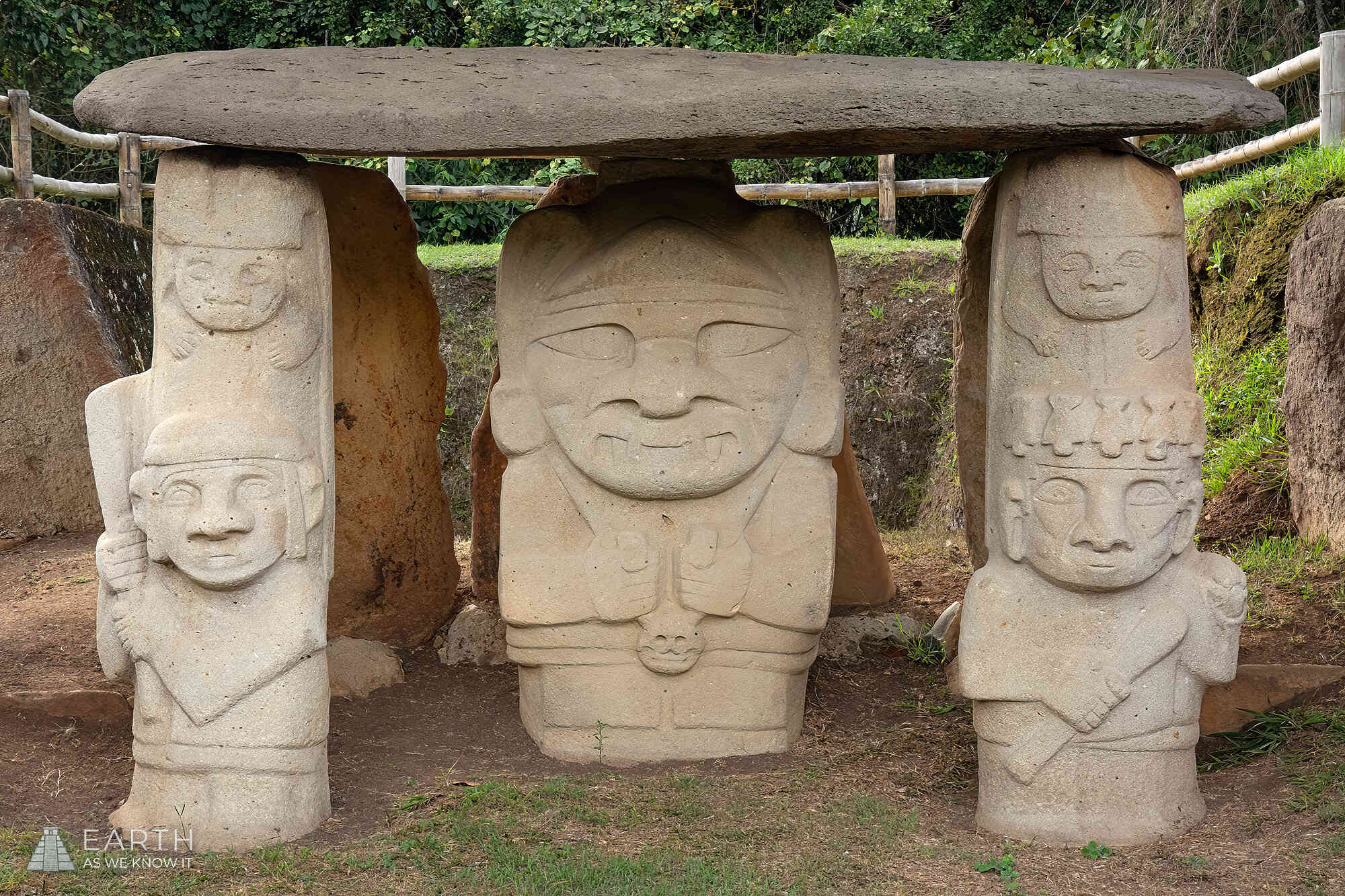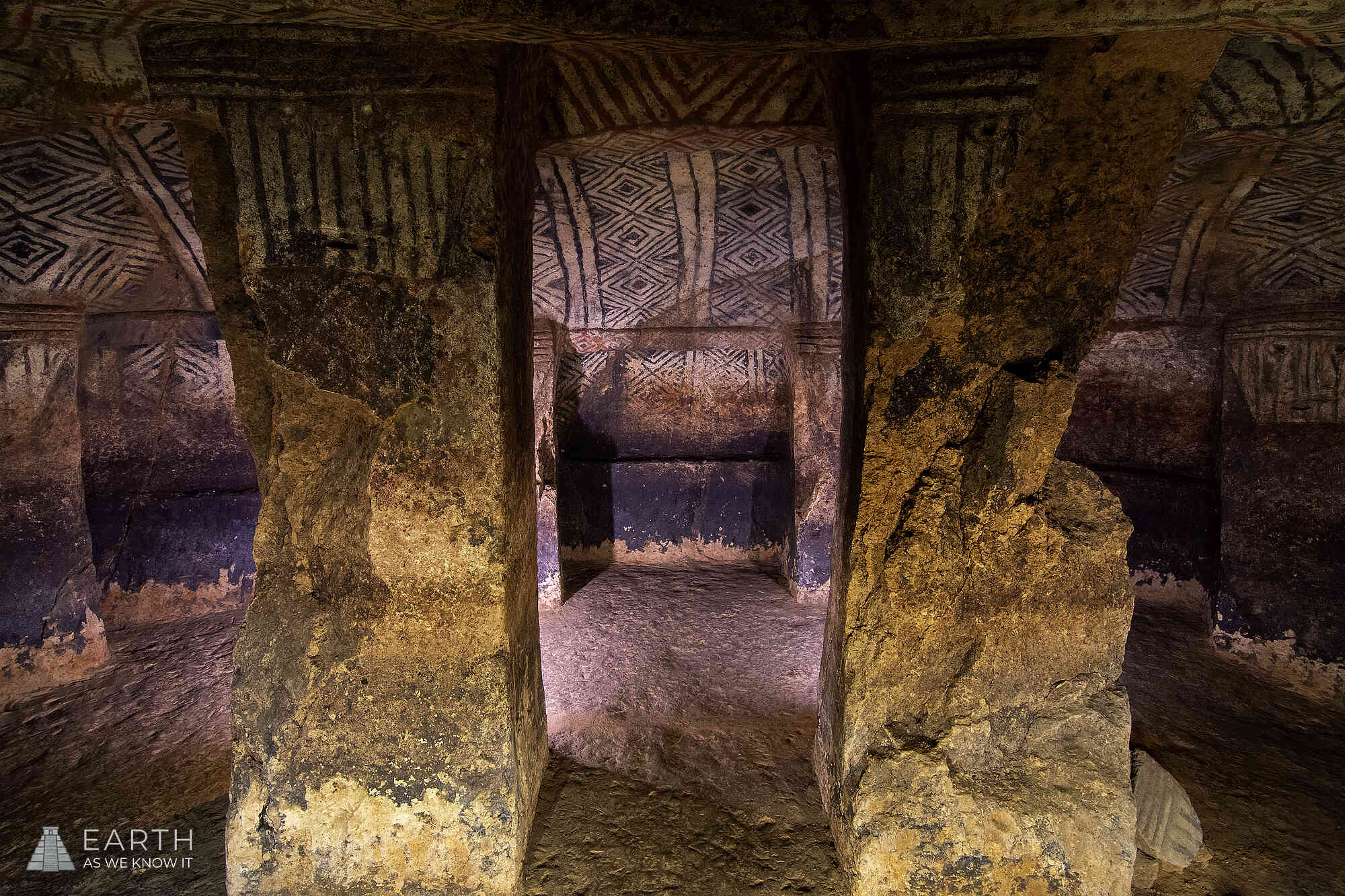The Ancient Chiefdoms of Magdalena River Valley
Within Colombia’s mountainous southwest, high in the Alto Magdalena River Basin, are the ancient remains of a network of tribal chiefdoms. Many of the locals in this area still get around on horseback, which is also a great way to travel between the archeological sites. This is a steep, mountainous landscape, of dense jungle checkered with coffee and banana plantations. Over the last century, much of the forest was cleared to make way for this farmland, and in the process dozens of earthen mounds were discovered. Inside they’ve unearthed over 500 massive stone statues buried within the tombs.


Dating to the Regional Classic Period, between 1-900 CE (Drennan, 2008), the statues depict all manner of creatures, combining characteristics of human and beast, zoomorphic forms such as the monkey, carrion bird, frog, anteater, lizard, or snake. They’re now on display throughout the hills in and around the town of San Agustín, as if the projections from this ancient tribal consciousness have been brought back to life. The burials were surrounded by large stone slabs, some of which were elaborately painted with swirling geometric patterns on the inside. At the entrance of the tombs stood fang-toothed guardians, as if to protect the deceased within the afterlife. Inside were placed stone or wood sarcophaguses, with human and animal depictions carved into their lids.
The tombs have since been heavily looted, and the acidity of the soil has resulted in little remaining skeletal evidence (Drennan, 2008). But there’s still much that can be determined from what remains. Some of the tombs had elaborate gold objects placed alongside the deceased, although the use of gold is much less abundant here compared to other regional cultures, such as the Muisca. The burial mounds themselves seem to have been located directly within the main grounds of each village, implying that the deceased remained a central part of life. What we know of such chiefdoms suggests that their ancestors were worshipped in a cult of the dead. Their spirits were thought to have continued their protection and guidance over the world of the living, a belief system that is still shared by many of South America’s remaining tribes.
The statues of the Alto Magdalena may represent shamanic transformations into animal spirits. Such beliefs are found elsewhere within other indigenous Andean cultures. Similar fang-toothed figures are found throughout Ecuador and Peru. It has been suggested that these may represent a cultural diffusion of the feline cult of the Chavín culture of Peru (Velandia Jagua, 1999). Another parallel here is statue holding a rod in each hand, a possible instance of the Andean Staff God, also seen at Chavín de Huantar and in subsequent Peruvian cultures, such as the Wari and Tiwanaku. However, some skepticism is appropriate here considering the large distance involved between these areas. Jaguars and pumas did exist in both regions, so the fanged-tooth iconography may have simply arisen independently.
For centuries the ritualistic carving of these statues continued unimpeded, passed down through the generations in what must have been a fundamental part of village life. The traditions of these early societies often remained remarkably stable for centuries in a way that wouldn’t be imaginable today. But then something changed. After the 900s no new statues were created, even though the area remained populated. Researchers aren’t entirely sure why. Some suggest that new tribes moved into the area, displacing the established communities along with their unique culture. Others hold that somehow the existing power structure may have shifted, challenging traditional thinking and allowing a transition to a new set of practices.


Another archeological area within the Alto Magdalena basin named Tierradentro shows similar evidence of veneration of ancestors. Tierradentro is located a few hours’ drive north of San Augustine. After travelling here by bus through steep winding canyon roads, I was dropped off on the highway. I began my accent up to the village of Inza, only to find that the bridge had been swept away in a recent flood. Fortunately, some locals had chopped a tall tree down to span the river crossing. The following day, while exploring the area, an old man warned me of a “duende” that had destroyed the bridge. It wasn’t the first time I’d heard locals speaking of their belief in these creatures. In their folklore, they’re described as like trickster gnomes or elves with magical powers, and the ability to take on various forms.
The Tierradentro region appears to have some cultural similarities with San Agustín, including some similar ceramics found within the area (Gómez et al., 2011). While there have been some stone statues and slab stone burials also found in the area of Tierradentro, they are far less widespread than at San Augustine (Drennan, 2008). Instead, what makes this site unique are the massive underground tombs, referred to as hypogea. These were built around the 6th to 9th centuries, roughly coinciding with the ongoing ancestor worship of the later part of the San Augustine archeological site (Chavez and Puerta, 1986).


The hypogea varied in size and complexity. Most were smaller shaft tombs with a single chamber. This style is thought to have been more commonly used for most of the population, whereas the larger hypogea were reserved for higher status individuals or lineages (Gómez et al., 2011). This is consistent with a wider shift in the Alta Magdalena where power was becoming concentrated into more socially hierarchical chiefdoms.
Some of the smaller tombs housed only a single primary burial. However, secondary burials were more common within the larger chambers, consisting of ceramic pots containing bones or the cremated remains of other individuals (Chaves and Puerta, 1986). The ceramic style of these funerary urns is notably distinct from that of San Agustín. The interior of a few of the larger tombs were decorated with patterns and bands which may represent the wood or thatch buildings of the living (Gómez et al., 2011). The larger, more elaborate tombs have carved spiral staircases leading down into them, suggesting that the tribe that built these may have descended back into the earth for ceremonies paying homage to their ancestors.
Sources
- Chaves Mendoza, Alvaro and Mauricio Puerta Restrepo, 1986, Monumentos Arqueológicos de Tierradentro. Biblioteca Banco Popular, Bogotá
- Davis, Wade. (1996) One River: Explorations & Discoveries in the Amazon Rainforest. New York: Simon & Schuster.
- Drennan, R.D. (2008). Chiefdoms of Southwestern Colombia. In: Silverman, H., Isbell, W.H. (eds) The Handbook of South American Archaeology. Springer, New York, NY. https://doi.org/10.1007/978-0-387-74907-5_21
- Gómez, D. H., Fernández, V. G., Piazzini, C. E., López, M. P. (2011) Tierradentro National Archaeological Park Guidebook. Instituto Colombiano de Antropología e Historia
- Patterson, T. C. (1965). Ceramic Sequences at Tierradentro and San Agustin, Colombia. American Antiquity, 31(1), 66–73. doi:10.2307/2694023
- Schuetz-Miller, M.K. (2012). Sacred Architecture among Ancient People of South America. Journal of the Southwest 54(2), 295-303. https://dx.doi.org/10.1353/jsw.2012.0017.
- Velandia Jagua, César Augusto. (1999). The archaeological culture of San Agustín. Towards a new interpretation. 10.13140/2.1.4290.3360.





















